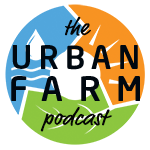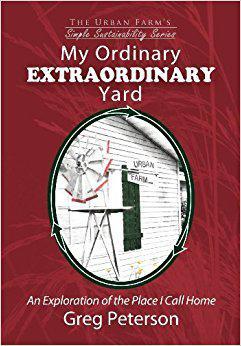185: Elaine Ingham on Life in the Soil.
Examining the biology of healthy soil to improve plant growth.
 Dr. Elaine Ingham is the Founder, President and Director of Research for Soil Foodweb Inc., a business that grew out of her Oregon State University research program.
Dr. Elaine Ingham is the Founder, President and Director of Research for Soil Foodweb Inc., a business that grew out of her Oregon State University research program.
Behind her user-friendly approach to soil lies a wealth of knowledge gained from years of research into the organisms which make up the soil food web. Her goal is to translate this knowledge into actions that ensure a healthy food web that promotes plant growth and reduces reliance on inorganic chemicals. Elaine also offers a pioneering vision for sustainable farming, improving our current soils to a healthier state, without damaging any other ecosystem.
In her spare time, Elaine publishes scientific papers, writes book chapters and gives talks at symposia around the world. Elaine and her husband Russ (who also has a Doctorate from Colorado State University in Zoology, emphasizing nematology,) live in Corvallis Oregon.
In this podcast:
Greg talks with one of the foremost experts on soil health Dr. Elaine Ingham and learns a lot about the world of microbiological life in the soil. Her studies have been amazing and it is easy to see how being a student in one of her classes can be quite informative. She tells about how she became so focused on the microbiological life in the soil and educates us on the importance of those first few dozen inches of earth our food is grown in. This is a mini course of science in just one podcast.
Listen in and learn about:
- How her early work basically started with her veterinarian father at the University of Minnesota and going into the fields to study sick cows
- Keeping her busy by having her look for specific plants and finding only poisonous plants in the cow pastures
- At six learning to use the microscope
- Deciding against going to medical school, and deciding to go into micro biology
- Going to Texas A&M to work on marine microbiology
- Meeting her future husband and searching for a university that would give them both research assistant ships
- Changing from marine systems to soil systems
- Developing her methodologies for looking for life in single samples of soil, both active and dormant
- Then their decision to move to professor positions at another university
- A year apart but the new opportunities of working with soil manipulation
- 1985 was the first time there was publication on the soil manipulation
- Her work at Oregon State University as an assistant professorship and being split between two different colleges
- The struggles of working in two colleges at the same university
- There are 13 different microclimates in Oregon and the need to go to Hawaii to research the missing tropical ecosystems
- The study of biology in the soil and the different stages of life in various stages of soil
- Building the soil biology to increase the yield 300 to 800% documented
- Working with the EPA and struggling to accomplish the project by getting pulled to fight other soil issues
- One project working on genetically engineered organisms and determining what effect they have on the ecosystem
- Working with EPA projects that were not controlled and finding results that were incomplete
- Her work with her graduate student to work with a genetically engineered organism that could survive in the soil
- How they created different control microcosms to test the GEO properly and see what worked
- Why a microorganism that was going to create alcohol was so important to that area of Oregon
- Why crops are burned and what this new application of microorganisms would make a difference
- The byproduct alcohol that resulted and why it is important
- The sludge at the bottom of the bucket and how that was going to be applied
- What the alcohol creating microorganism was going to do in the soil for the next layer of crops
- The findings that came from the tests
- How they stopped the application of a field test that would have destroyed plant life and be released into the world without any control
- How the complexities of DNA cannot be predicted when a genome is inserted in the middle
- Her presentation to the United Nations and the change in policy that was averted
- What happened when she returned to the university after stopping the progress of the field tests
- What she did after leaving the university
- Why she says she did not save life on earth
- Why landfill operations are not really composting
- How to keep a compost pile aerobic
- In an ag field, we need at least 1 million different species of bacteria
As well as:
- Her drive – championing the cause of healthy soil
Producer’s Note:
For more information on soil and it’s connection to soil health, check out our low cost webinar with Dr. Ingham through our eLearning Specialty Webinars. For more information click HERE
Books written by Elaine:
10 Steps to Gardening with Nature
Adding Biology – For Soil and Hydroponic Systems
Compost Tea Quality: Light Microscope Methods
Qualitative Assessment of Microorganisms Manual
The Field Guide I for Actively Aerated Compost Tea
The Field Guide II for Compost Tea
The Compost Tea Brewing Manual
How to reach Elaine:
Website: Soilfoodweb.com
Email: info@environmentcelebration.com
UrbanFarm.org/lifeinthesoil
*Disclosure:
Some of the links in our podcast show notes and blog posts are affiliate links and if you go through them to make a purchase, we will earn a nominal commission at no cost to you. We offer links to items recommended by our podcast guests and guest writers as a service to our audience and these items are not selected because of the commission we receive from your purchases. We know the decision is yours, and whether you decide to buy something is completely up to you.




1 Comment